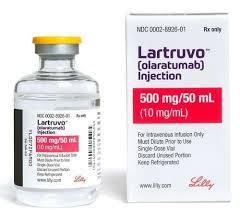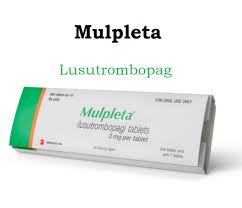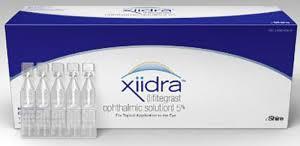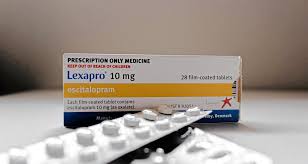Lamisil
Lamisil, known generically as Terbinafine, is a distinguished antifungal medication available by prescription and over-the-counter, designed to combat fungal infections affecting the skin, hair, and nails. This elegant treatment falls under the allylamine class of drugs, functioning by effectively halting the proliferation of fungi.

Applications
Fungal Nail Infections (Onychomycosis)
Addresses infections instigated by dermatophytes, the fungi responsible for nail afflictions.
Tinea Infections (Dermatophyte Infections)
Pedis (Athlete’s Foot): A fungal condition impacting the feet.
Cruris (Jock Itch): A fungal infection localized in the groin area.
Corporis (Ringworm): A fungal infection manifesting on the body.
Capitis: A fungal infection affecting the scalp and hair follicles, predominantly in children.
Other Yeast Infections of the Skin
Including conditions such as cutaneous candidiasis and pityriasis versicolor.
Mechanism of Action
Terbinafine operates by inhibiting the enzyme squalene epoxidase, essential for the synthesis of fungal cell membranes. This inhibition results in a toxic accumulation of squalene within the fungal cells, ultimately leading to their demise.
Forms and Potencies
Oral Tablets:
250 mg (available by prescription only).
Topical Preparations:
Cream: 1% concentration.
Gel: 1% concentration.
Spray: 1% concentration.
Solution: 1% concentration.
Dosage Guidelines
Oral Tablets (Fungal Nail Infections):
Adults: 250 mg administered once daily for a duration of 6 weeks for fingernails or 12 weeks for toenails.
The treatment duration may be adjusted based on the infection’s severity.
Topical Applications:
A thin layer should be applied to the affected area once or twice daily for 1 to 2 weeks, contingent upon the specific condition.
It is noteworthy that oral terbinafine is generally reserved for more severe or widespread infections, such as onychomycosis, while topical formulations are intended for localized skin infections.
Common Adverse Reactions
Oral Tablets:
– Headaches
– Gastrointestinal discomfort, including nausea, diarrhea, and abdominal pain
– Altered taste sensation, which may linger post-treatment
– Skin rashes
– Increased liver enzyme levels
Topical Forms:
– Redness
– Itching or irritation at the site of application
– Dryness or flaking of the skin
Serious Adverse Reactions
Hepatotoxicity:
– Although rare, significant liver damage may occur.
– Symptoms include jaundice, dark urine, pale stools, and abdominal discomfort.
Allergic Reactions:
– Manifestations may include rashes, swelling, or breathing difficulties.
Blood Disorders:
– Rare instances of neutropenia or agranulocytosis, indicating a decrease in white blood cells.
Severe Skin Reactions:
– Conditions such as Stevens–Johnson syndrome (SJS) or toxic epidermal necrolysis (TEN) may arise.
Taste and Smell Disturbances:
– These may persist for several months or, in rare cases, become permanent.
Warnings and Precautions
Liver Function:
– Prior to initiating oral terbinafine, liver function tests are essential, particularly for those with a history of liver issues.
– Alcohol consumption should be avoided during treatment to minimize liver stress.
Kidney Function:
– Not advisable for individuals with severe renal impairment (creatinine clearance<50 mL/min).
Pregnancy and Lactation:
– Pregnancy: Data is limited; use only if the benefits significantly outweigh the risks.
– Breastfeeding: Terbinafine is present in breast milk; its use during breastfeeding is not recommended.
Immunosuppressed Patients:
– Caution is advised, as fungal infections may present more severely.
Drug Interactions
Cytochrome P450 Inhibitors (e.g., cimetidine):
– These may elevate terbinafine levels.
Cytochrome P450 Inducers (e.g., rifampin):
– These may reduce terbinafine levels.
Other Medications:
– Exercise caution with drugs metabolized by CYP2D6 (e.g., antidepressants, beta-blockers), as terbinafine may influence their levels.
Monitoring
– Liver function tests should be conducted before and during oral terbinafine treatment.
– Vigilance for allergic reactions or unusual symptoms, such as persistent taste disturbances or
Effectiveness
Topical formulations: Users often notice a significant improvement in symptoms within just a few days of regular application.
Oral formulations: Complete resolution of fungal infections may take several weeks to months, as the medication operates through the natural regrowth of the nails.
Generic Availability
Terbinafine is offered as a generic option, providing a more economical alternative to the branded Lamisil.
Storage
Maintain at room temperature, ensuring it is kept away from moisture and direct sunlight.
Topical formulations should be securely sealed to avoid any risk of contamination.
Lamisil stands as a remarkably potent antifungal solution, yet it is essential to adhere strictly to the prescribed regimen to achieve the best outcomes. Always seek guidance from your healthcare provider prior to commencing treatment and promptly report any side effects or concerns.






